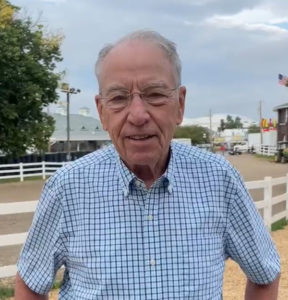Project to map Iowa’s shallow groundwater resources

DES MOINES — The Iowa legislature has set aside $250,000 to start developing accurate maps of Iowa’s underground water resources.
State geologist Keith Schilling is director of the Iowa Geological Survey, the agency that will develop the maps of shallow groundwater supplies.
“There’s an increasing demand for groundwater in Iowa from municipal users, business and industries and even irrigation,” Schilling said during a Radio Iowa interview. “We know something about Iowa’s shallow underground water resources, but not everything we need to know.”
Schilling’s agency has done some site specific research in some locations around the state. “What we really need to do is to connect the dots,” Schilling said, “and understand how much of this groundwater is available, what’s the recharge rate that occurs, how much is discharged to the streams and how much is being used in order to develop some idea of the long term sustainability of our groundwater supplies.”
The Iowa Geological Survey has the equipment, supplies and technology that can be used to evaluate water supplies above the bedrock surface. “That includes the shallow sand and gravel alluvium along our river courses,” Schilling said. “It also includes deeper sand and gravel bodies sitting on top of the bedrock, buried by thick glacial materials.”
The alluvium is generally the area that borders a river where sediment is deposited by the flow of water at the surface. The shallow groundwater maps, once completed, should help determine the long-term sustainability of each aquifer in Iowa according to Schilling.
“What product could we do first and easiest to get some producible results? In which case we might focus year one more on the Iowa River alluvium,” Schilling said, “because there are several users working in this water supply.”
Schilling said understanding the basic distribution of Iowa’s shallow groundwater resources may prevent potential disputes over water access in the future. “As users increase, the aquifer itself is not changing shape. There’s only so much water there,” Schilling said. “We need to understand how much water’s there and how sustainable its use is.”
Mapping deep underground aquifers that are below the bedrock is really expensive and is not part of this project. The funding to start mapping shallow aquifers is included in a budget bill that cleared the legislature last week.




